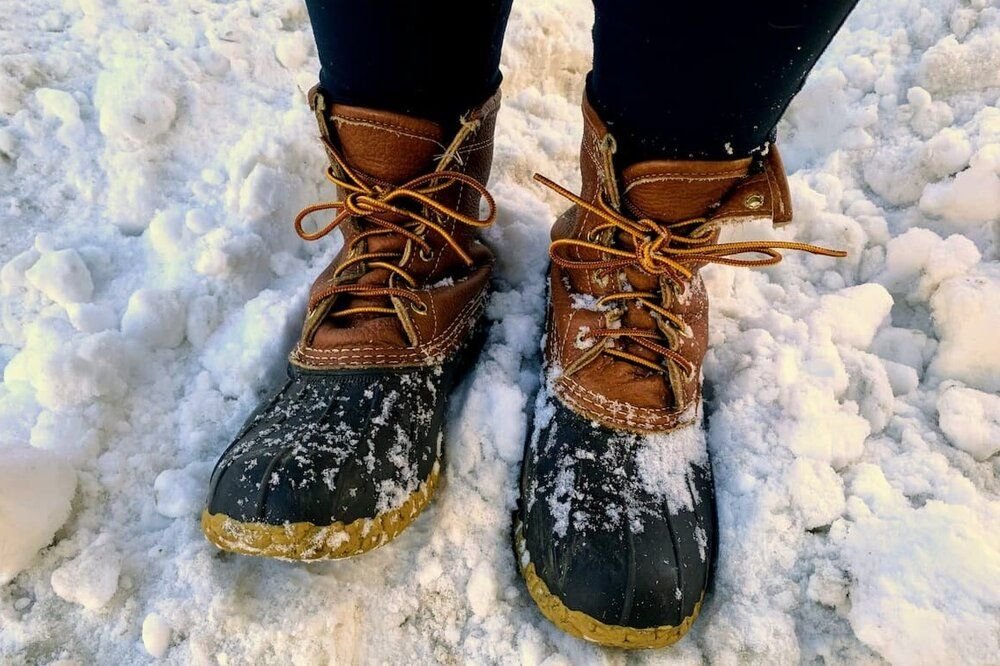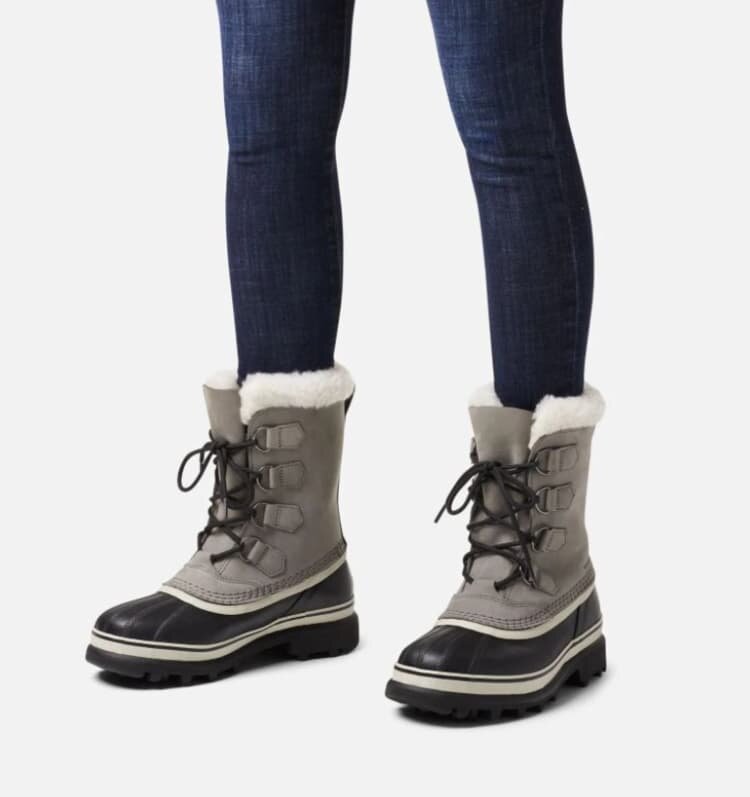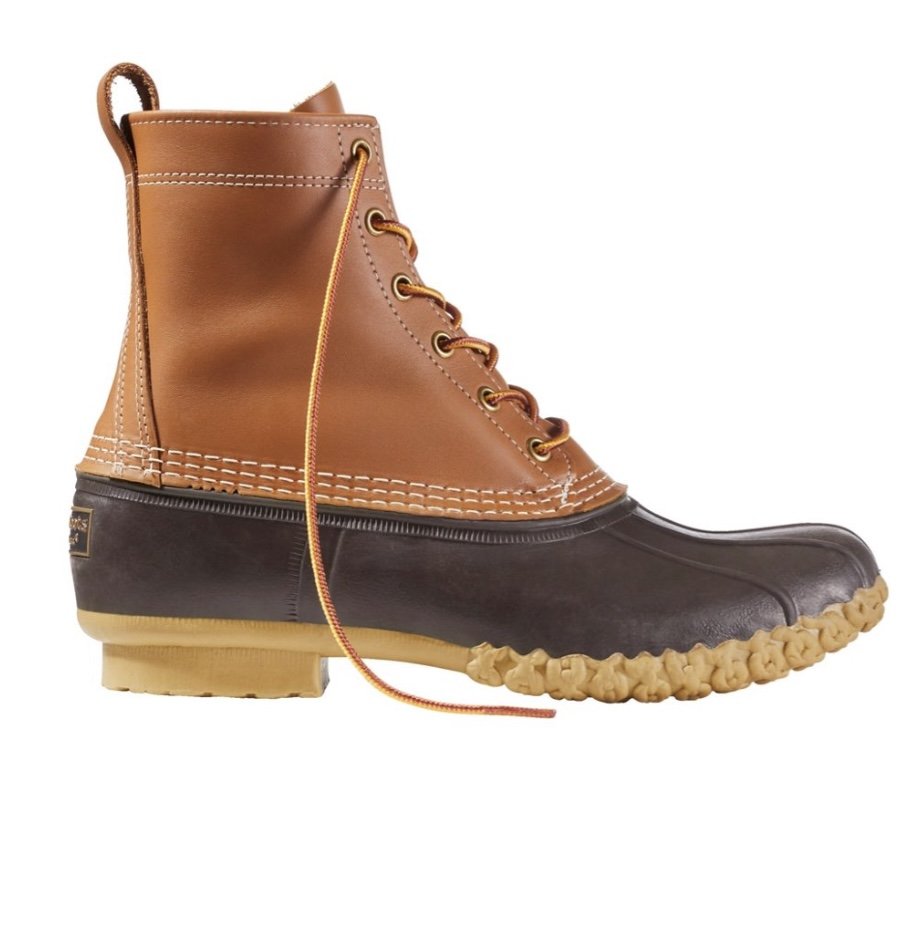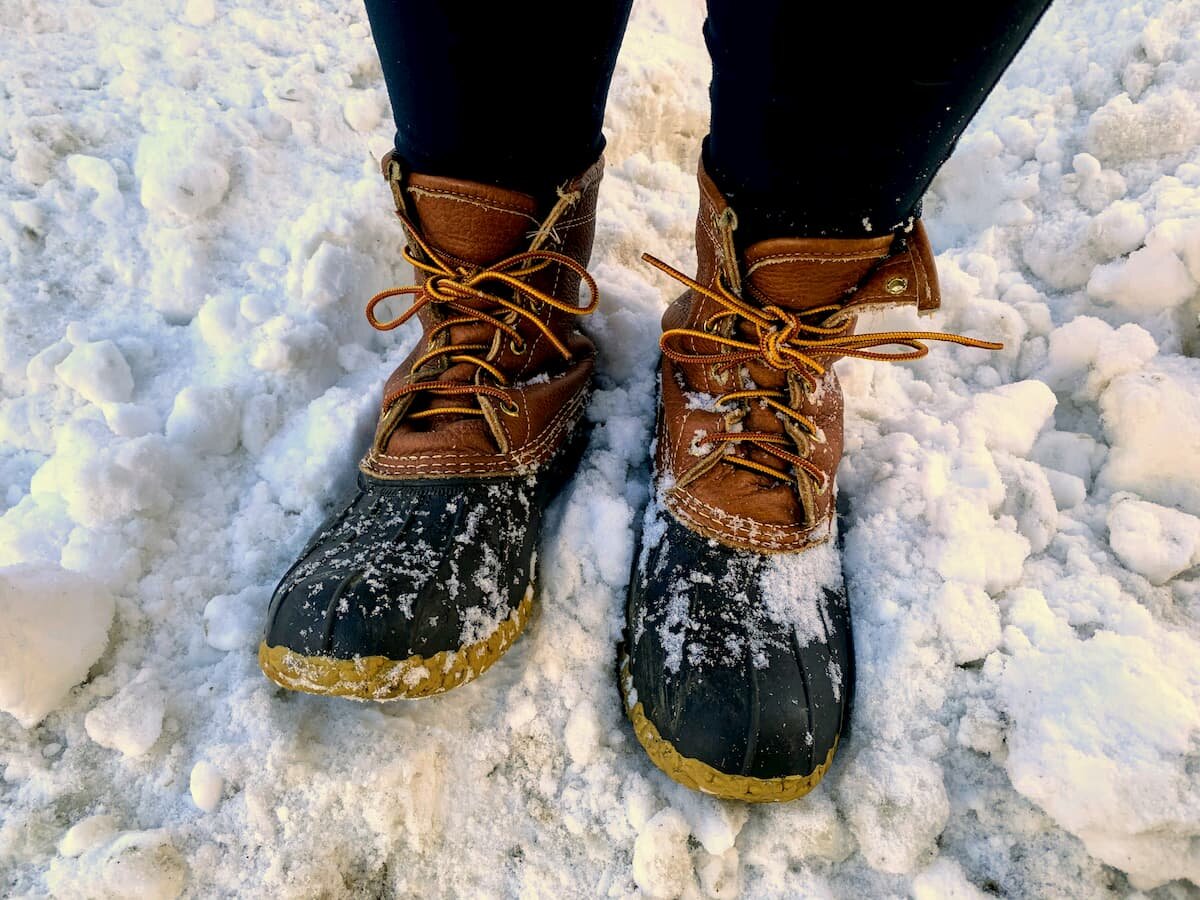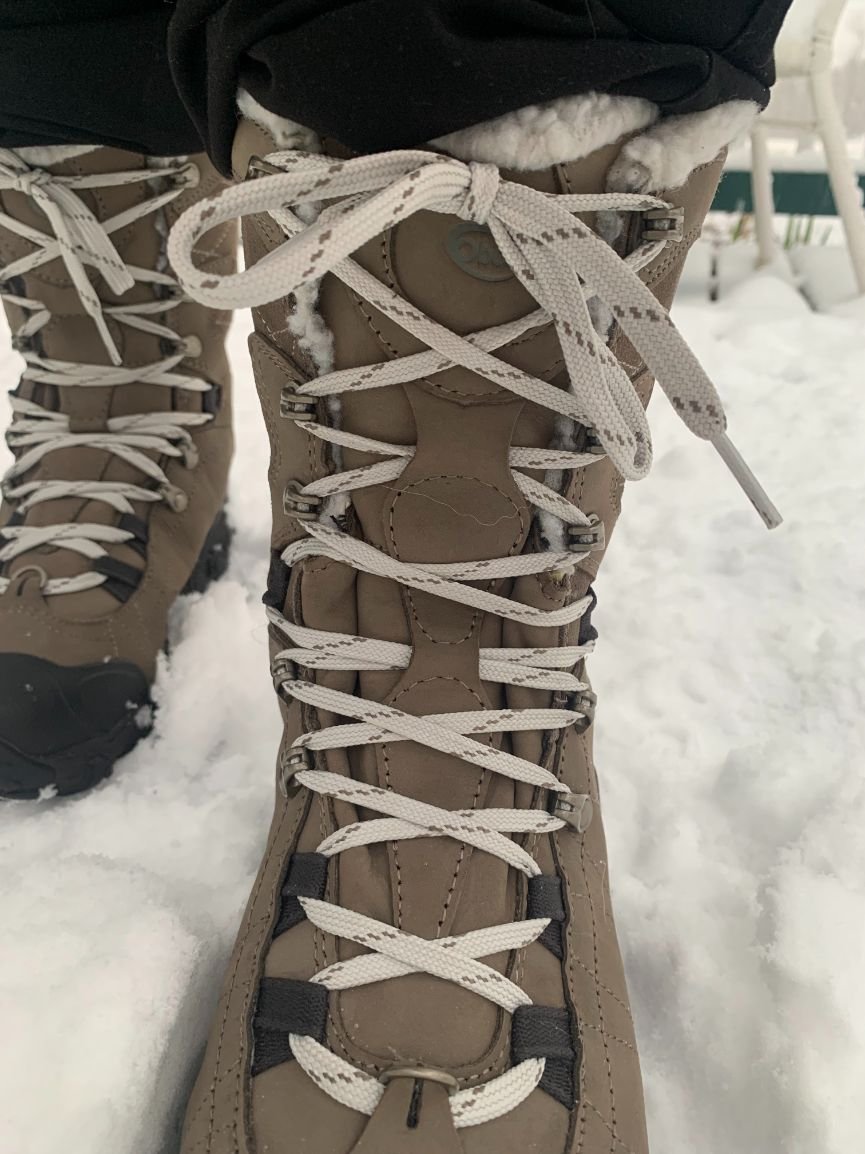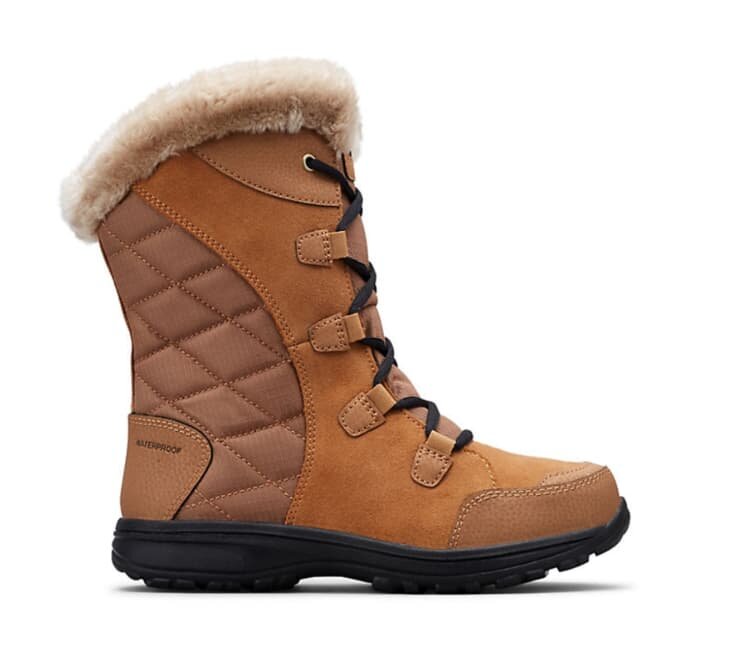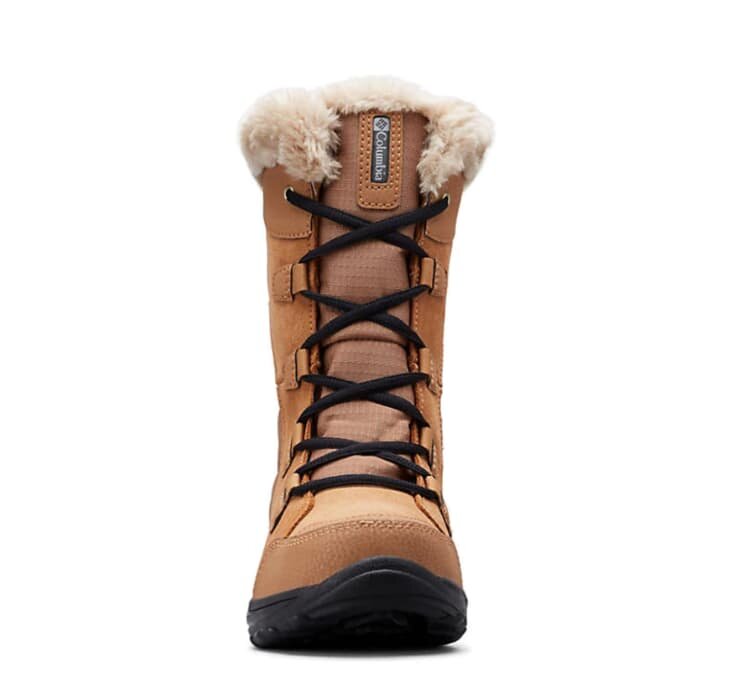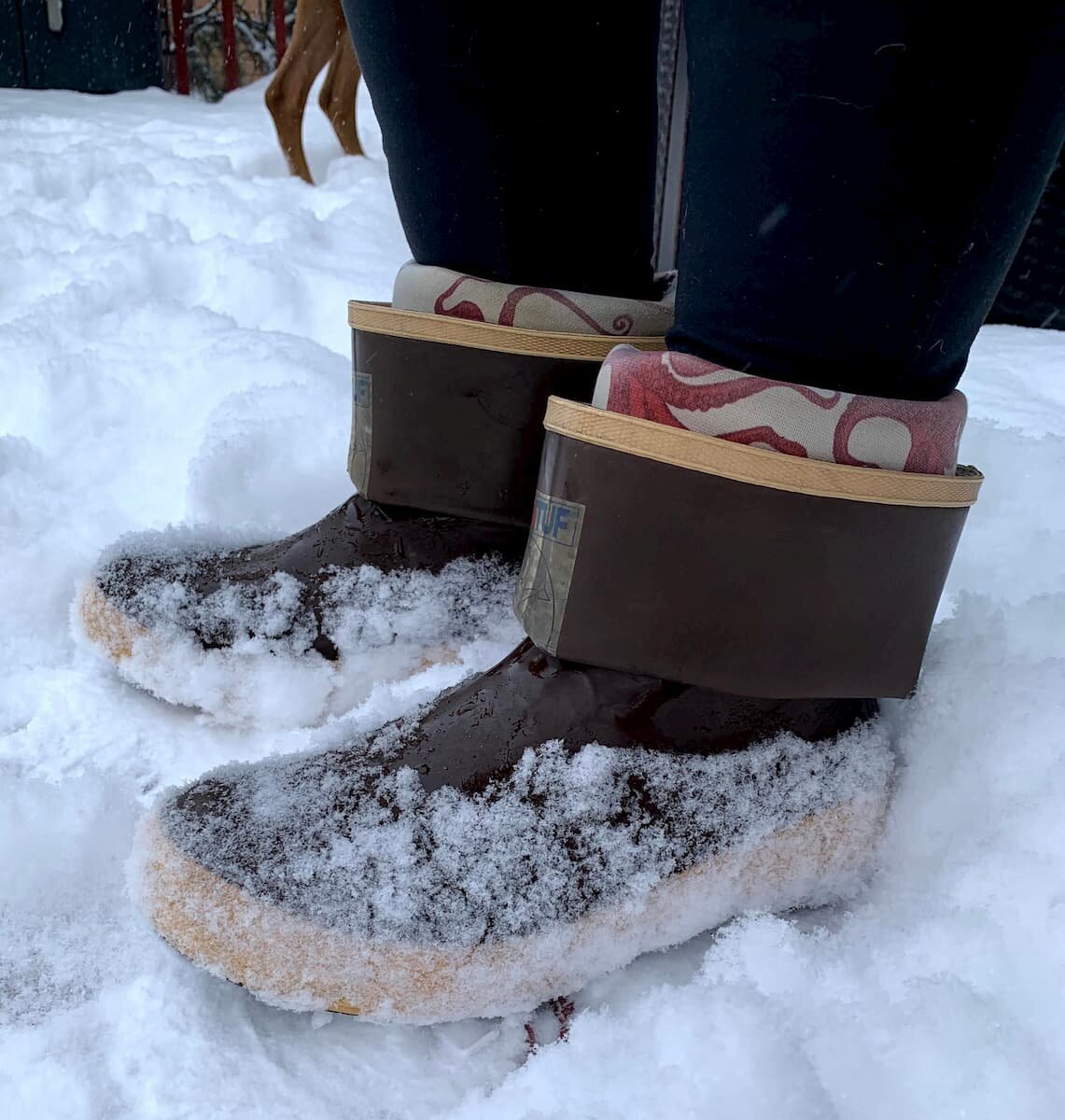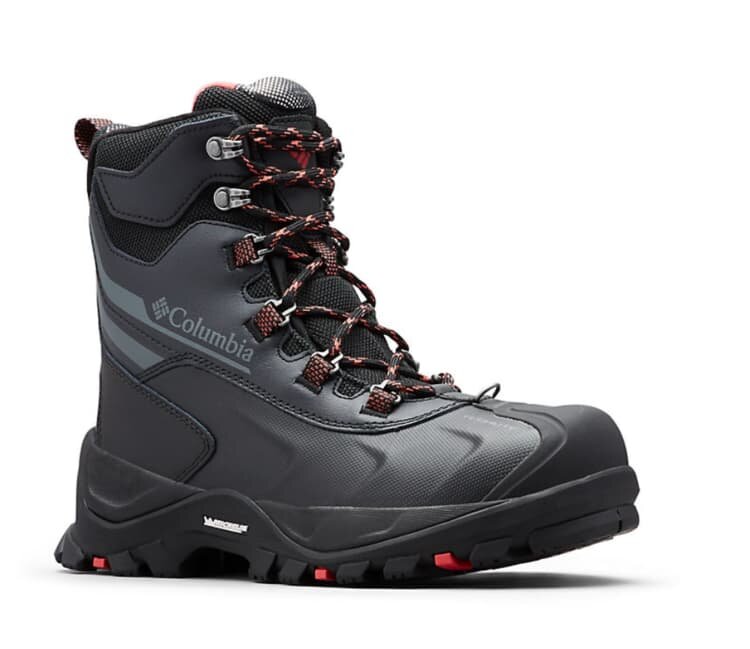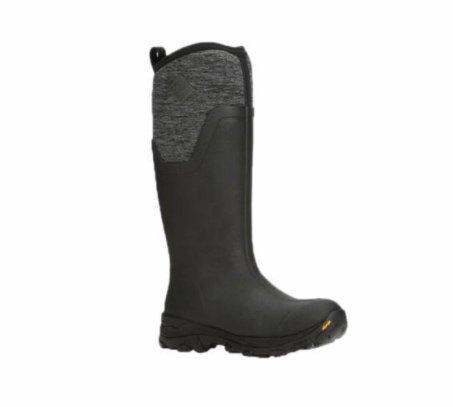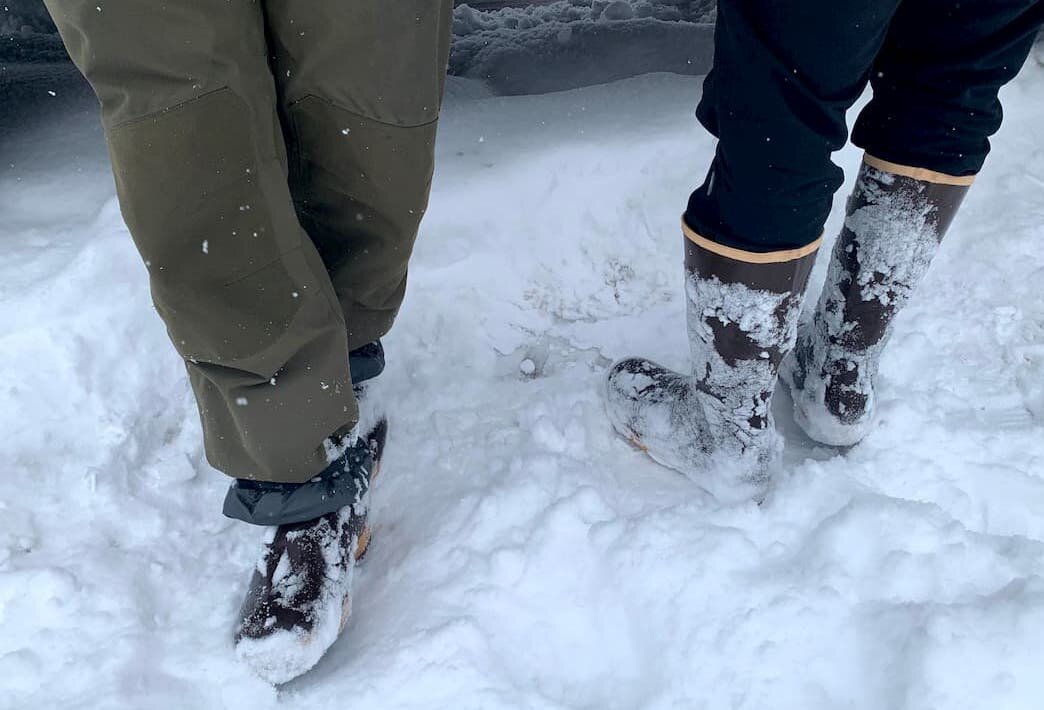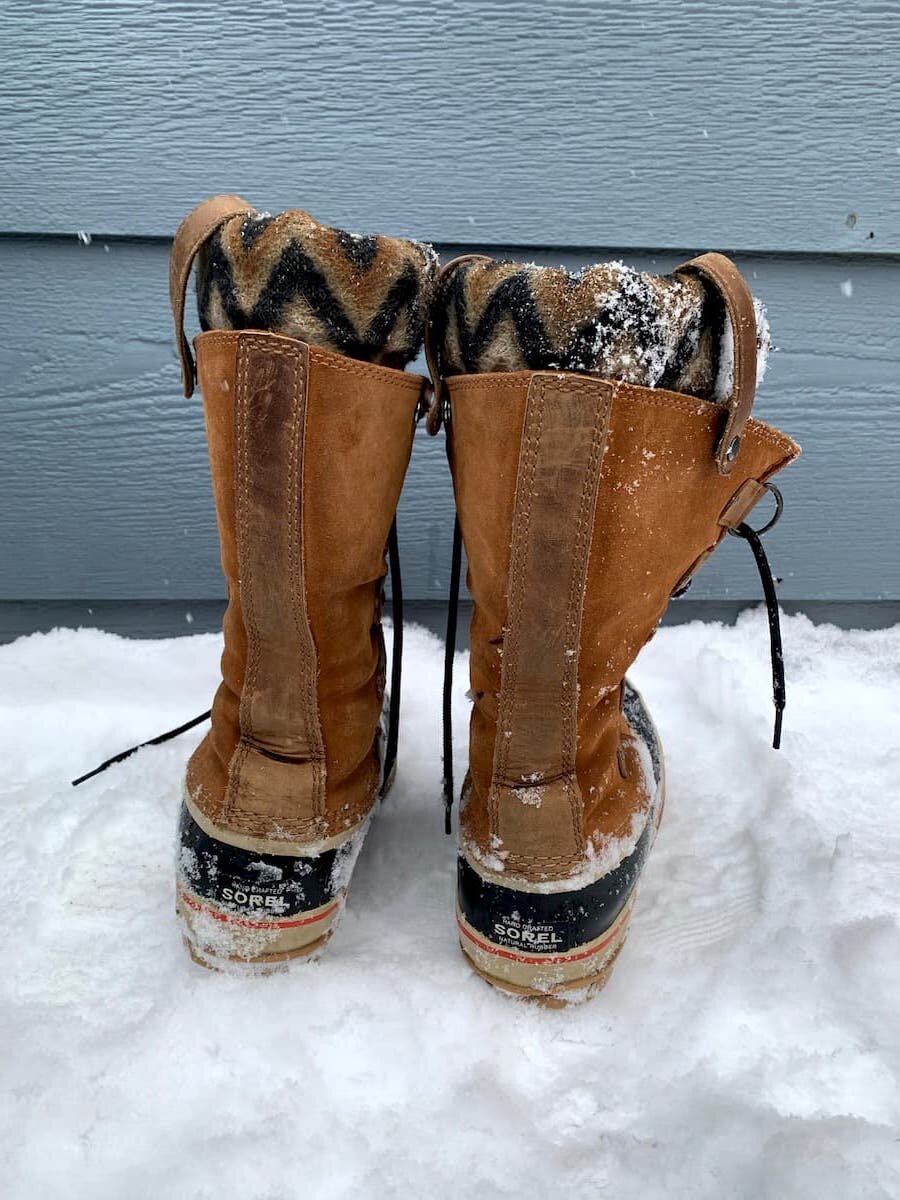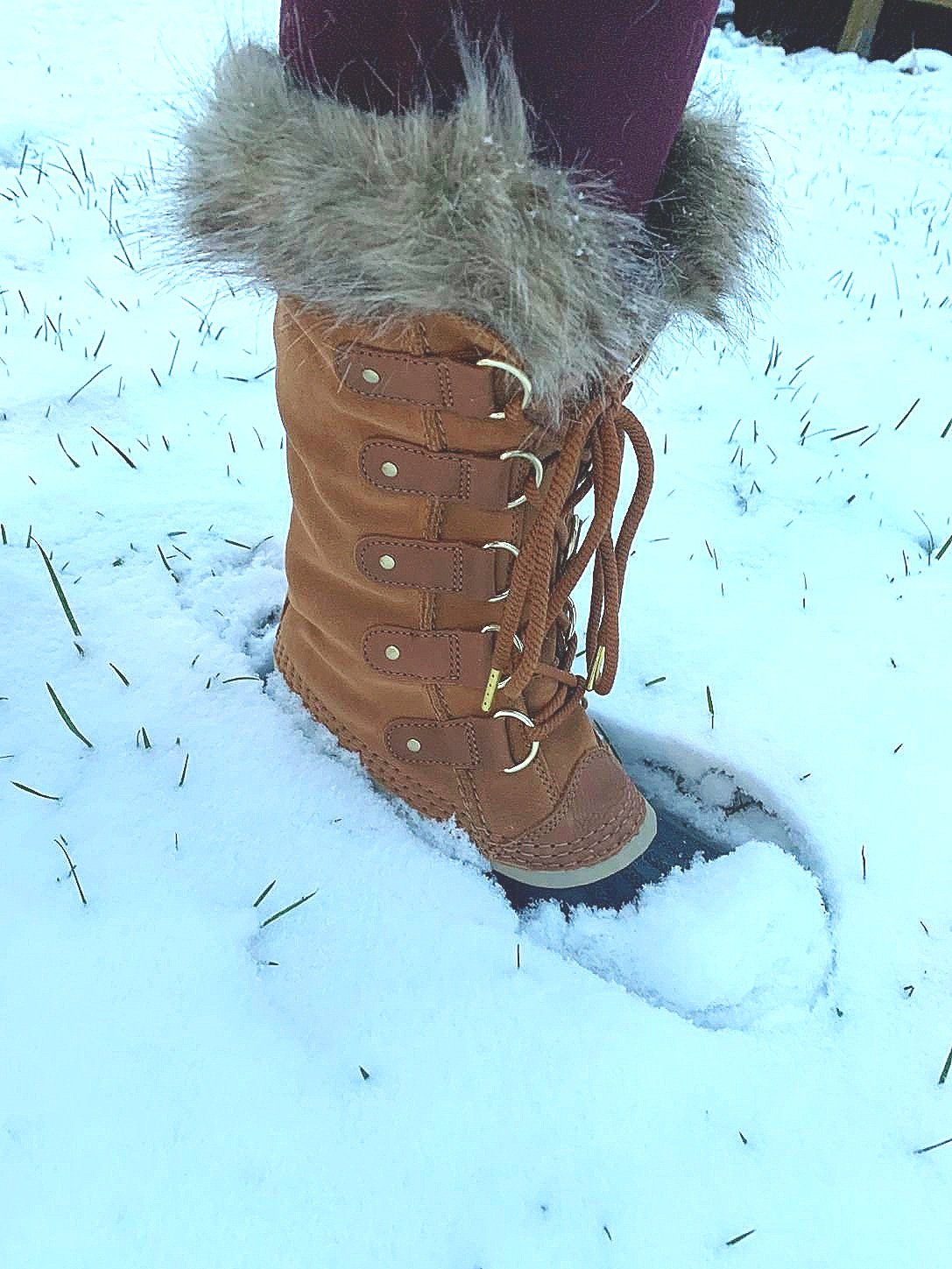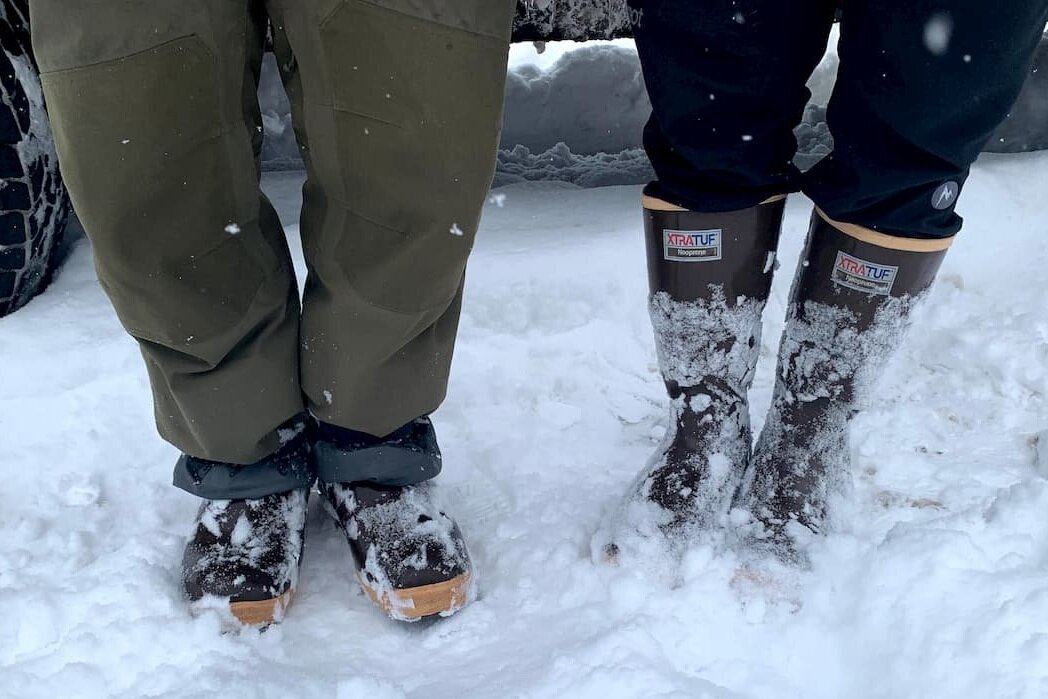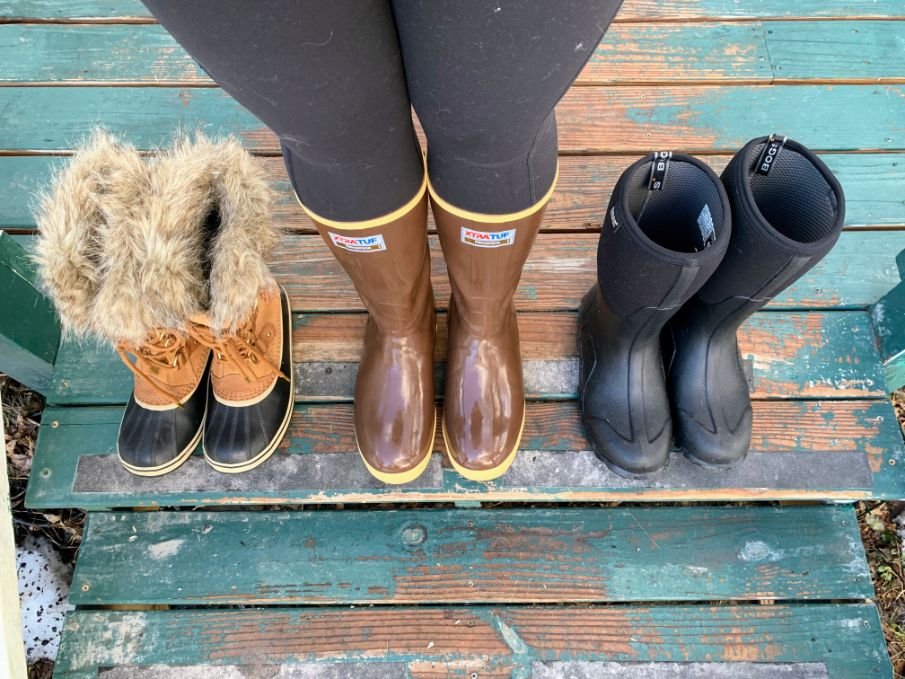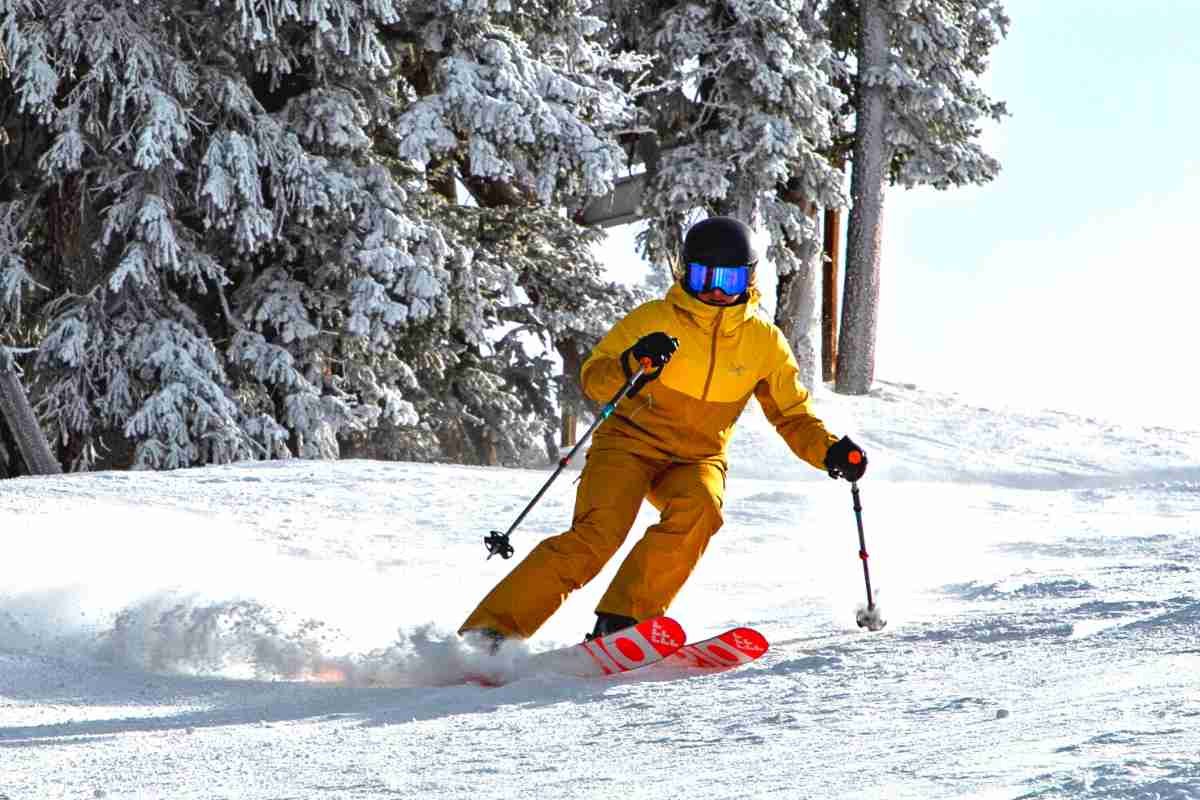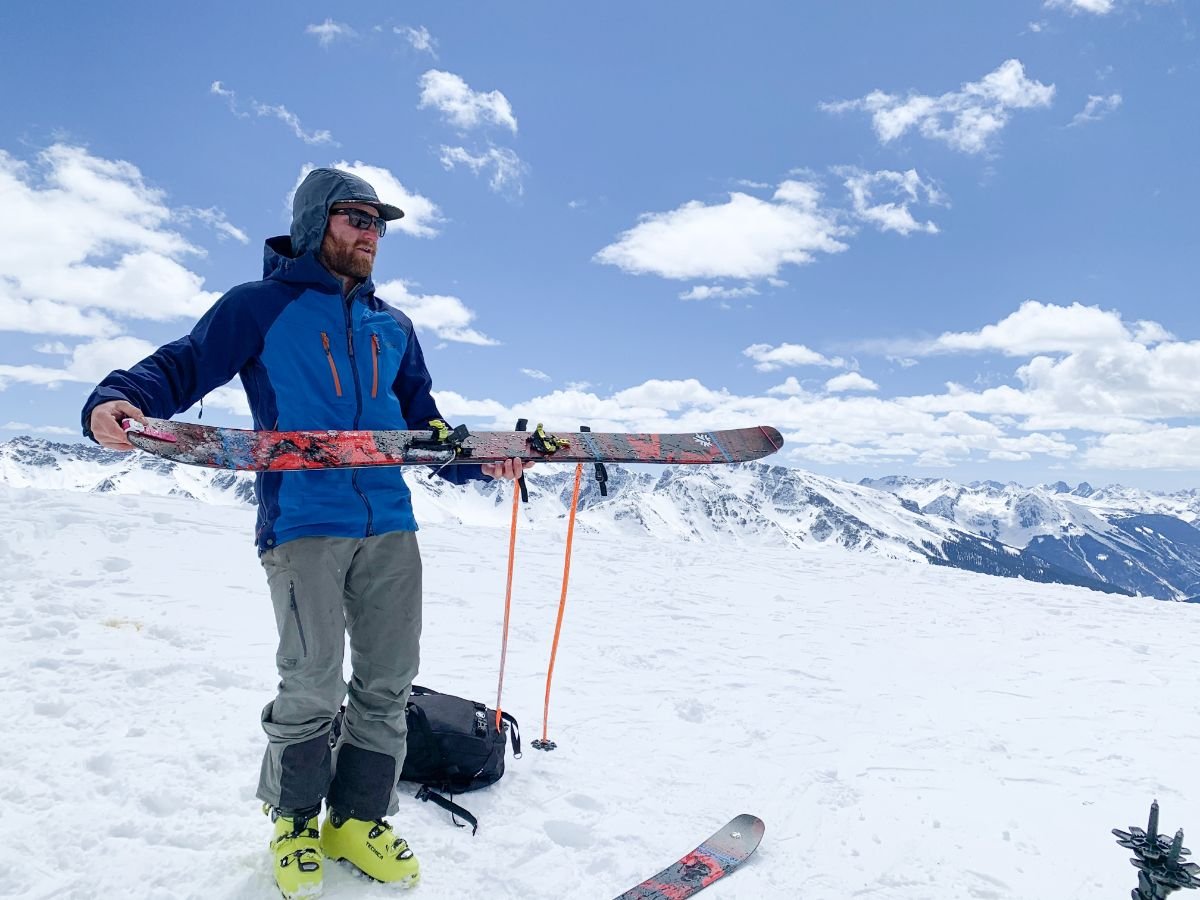Best Women's Winter Boots of 2025
The Top Women’s Winter Boots for Warmth, Waterproofness, Fit, Comfort, and Ice Traction
January 16th, 2025, updated to include a new winner, add months’ worth of testing notes, remove discontinued products and added care and maintenance and guidance on choosing boots for different conditions
Home > Gear Reviews > Footwear
From Maine to Alaska, we trudged through ice and snow in search of the best women’s winter boots to keep feet warm, dry, and comfortable.
A good pair of waterproof winter boots is essential cold-weather gear because when winter is in full swing, your feet are the first to know!
We've spent the past four years researching over 50 of the best women’s winter boots and field-testing the most promising models on ice and snow.
We landed on nine of the best for most people, looking at warmth, comfort, fit, traction, waterproofness, and insulation.
For everything winter throws at you, we’ve got you covered so you can spend more time doing what you love outdoors and less time indoors dreaming of spring.
Looking for men’s boots? See our Best Men’s Winter Boots article.
We create reader-supported, objective gear reviews independently selected by our editors. This story may contain affiliate links, which help fund our website. When you click on the links to purchase gear, we may get a commission — without costing you an extra cent. Thank you for supporting our work and mission of outdoor coverage for every body! Learn more.
Women’s Winter Boots Comparison Table
| WOMEN'S WINTER BOOT | TREELINE AWARD | MSRP* | INSULATION | SHAFT HEIGHT | TEMPERATURE RATING | WATERPROOF? |
|---|---|---|---|---|---|---|
| Sorel Joan of Arctic Waterproof | Best Overall Read why |
$240 | 6 mm washable felt inner boot | 12" | -25 F | Y |
| Sorel Caribou | Best for Extreme Cold Read why |
$200 | 9 mm washable felt inner boot | 8.5" | -40 F | Y |
| L.L.Bean 8" Bean | Best for Walking Around Town Read why |
$139-289* | PrimaLoft, shearling lining (uninsulated also available) | 8" | Warm, Warmer, and Warmset options | Y |
| Oboz Bridger 9” Insulated B-DRY | Best Slip Resistant Read why |
$220 | 200g Thinsulate | 9" | Not stated | N |
| Columbia Ice Maiden II | Best Affordable Winter Boot Read why |
$100 | 200 g | 10.2" | -25 F | N |
| Bogs Neo-Classic Tall | Best Insulated Pull On Read why |
$140 | 7 mm neoprene | 13" | -58 F | N |
| XTRATUF Salmon Sisters 15" Legacy | Best Non-insulated Pull On Read why |
$160 | Uninsulated | 12" or 15" | Not stated | Y |
| Glerups Low Boot with Rubber Sole Slippers | Best Indoor Outdoor Slipper Read why |
$155 | Felted wool | Over the ankle | Not stated | N |
| Keen Revel Mid IV Polar | Best for Wide Feet Read why |
$190 | KEEN.WARM recycled PET insulation | Over the ankle and mid calf versions | -25 F | Y |
| Xero Shoes Ridgeway Chelsea | Best Zero Drop Read why |
$160 | Uninsulated | 5.5" | Not stated | Y |
* Prices reflect MSRP and are subject to change. We note any discounts we see on our Deals page, which is updated daily.
The Best Women’s Winter Boots
The Best Women’s Winter Boots:
Sorel Joan of Arctic Boots
Insulation: 6 mm washable felt inner boot
Shaft height: 12”
Temperature rating: -25 F
Waterproof: Yes
Footwear closure: Lace
Best for: All around, around town, snowshoeing, hiking
What we liked: warm, waterproof, comfortable boots with traction and durability, more like a sturdy work boot than a fashion piece, stylish
What we didn't like: run a tad large, can be too warm, can be difficult to put on and take off
Trust me, we hesitated a minute when we considered “boots with the fur” for our overall pick. But after wearing these boots for Maine to Alaska for eight years and confirming our love of these boots with the HUNDREDS of effusive reviews for the Sorel Joan of Arctic Boots, we realized why we aren’t alone when we say these are the most popular winter boots for women.
The Sorel Joan of Arctic Boots are popular for good reason: they combine warmth, waterproofing, and durability with a classic winter style. After eight years of testing these boots in harsh winter conditions from Maine to Alaska, they’ve proven their worth repeatedly. Many reviewers agree, with almost perfect ratings across hundreds of reviews.
Compare Prices Of The Sorel Joan Of Arctic Boots
Just because the Joan of Arctics are stylish doesn’t mean they aren’t hardy. Here, the author does some work on the truck in her Joan of Arctics. Photo courtesy Josette Deschambeault.
These boots aren’t just about aesthetics—they’re built to endure. The mid-calf 12” height, vulcanized rubber base, and waterproof suede upper keep snow and moisture out effectively. The boots also feature grippy treads for traction on icy surfaces and a gusseted tongue to seal out cold drafts. Inside, a 6mm recycled felt lining adds warmth, making these boots suitable for extended outdoor use.
One unique advantage of the Joan of Arctic Boots is their repairability. Instead of discarding worn boots, you can replace the liner, which the author did after eight years. Sizing tends to run slightly large, so it's best to stick with your true size, especially if planning to wear with regular or thinner socks. Overall, these boots offer a rare blend of style and rugged functionality—perfect for winter adventures or around-town use.
Sorel is a company synonymous with winter boots. Known for their high-quality products, waterproofness, durability, and warmth, nearly any snow boot you choose from them is going to keep you happy, dry, and warm throughout the winter. We go into the details in our in-depth review of the Sorel Joan of Arctic boots.
For more of our favorite Winter Gear recommendations, see our most popular Gear Guide stories:
Best winter boots for Extreme Cold: Sorel Caribou
Insulation: 9 mm washable felt inner boot with snow cuff
Shaft height: 8.5”
Temperature rating: -40F
Waterproof: Yes
Footwear closure: Lace
Best for: Extreme cold, around town, working, outdoor chores
What we liked: very warm, decade-long durability, sole has incredible traction
What we didn’t like: price, fit is not as snug due to the way the insulation is on the inside, can be too warm
The Sorel Caribou boots have long been considered the gold standard of extreme cold winter boots and have been kicking winter’s butt since the 1960s. And boy, can they pack a wallop. While known for their clunky-chore-boot charm, the Caribous have been keeping our toes ultra-toasty and feet dry in an 80-year spree with no end in sight.
Compare Prices Of The Sorel Caribou
My father has owned his pair of Sorel Caribous since 1992. I’ve never seen a winter without him wearing those boots—from New York to Colorado to Maine! In fact, many reviewers brought up family members having owned these boots for 15+ years, with the boots still going strong.
The women’s version of the Caribou is just as warm and durable. These boots are rated by Sorel down to -40°F. The author can tell you they’re quite comfy down to at least -20°F. Three different Treeline Review testers can verify, having used the Sorel Caribou from Maine to Colorado to Washington.
The tread on the Caribous was one of the best grips on packed snow, while the felt cuff and mid-calf shaft kept the snow, slush, and puddles far away from reviewers’ feet. For these reasons, the Caribou boots won our award for best women’s winter boots for extreme cold. We go into the details in our in-depth review of the Sorel Caribou boots.
Best Winter Boots for Walking Around Town: L.L.Bean Women’s Bean Boots
Insulation: Primaloft, shearling lining
Shaft height: 8”
Temperature rating: -30F
Waterproof: Yes
Footwear closure: Lace
Best for: Around town, style
What we liked: style, warmth, durability, made in US, variety of heights, colors, insulation, and sizes available
What we didn’t like: can be hard to get due to high demand, price
It’s a given; we couldn’t ignore the classic L.L Bean Duck Boot. With a 100-year old history, these made in the USA boots can be backordered by the 100,000.
The Bean Boot has a classic look that works in urban settings or on a trail. It’s a look that has been mimicked by boot makers—from J.Crew on the fancy end to XTRATUF on the outdoorsy side. It’s an aesthetic that works for a lot of settings—and we think that is a factor that makes it a winning boot.
View the L.L.Bean Women’s Bean Boots
That being said, while we’ve tromped through towns, down docks, and across snowy hills in our Bean duck boots, we wouldn’t recommend going on an extended hike with them right out of the box. The leather can be stiff and needs time to break in and mold to your feet.
When it comes to sizing, we recommend that half sizes order 1.5 sizes down (if you wear light or midweight socks). L.L.Bean has a great and easy exchange policy, however, so if your boots don’t fit right the first time, don’t be afraid to swap them out.
For more information, see our in-depth review of the L.L Bean Boots.
Best Slip-resistant Winter Boots for women: Oboz Bridger 9” Insulated B-Dry Winter Boots
Insulation: 200 g Thinsulate
Shaft height: 9”
Temperature rating: Not stated
Waterproof: Yes
Footwear closure: Lace
Best for: Hiking, snowshoeing, working
What we liked: excellent traction on ice, excellent ankle support
What we didn’t like: can be hard to find this highly-demanded boot, sizing runs small, can feel too stiff for city use
If neither ice nor snow will keep you off the trails, these boots are for you. If ice just isn’t your thing walking into work, these are also your perfect boots. The Oboz Bridger 9” Insulated Winter Boots are undoubtedly a chilly winter hiker’s dream—and one we found useful for shoveling snow, walking the dog, and winter activities where good traction is essential.
Oboz is primarily a hiking boot and hiking shoe company, and you’ll see them in our Best Hiking Boots and Best Hiking Shoes guide. To make their winter hiking boot, they took the design and technology and added extra height and insulation.
We chose the Oboz Bridger 9” as the best winter boots for hiking due to the excellent traction and grip that the Oboz Bridgers have on slippery, icy, and snowy surfaces. The Oboz Bridger is also our winner in our Best Winter Hiking Boots guide.
Compare prices of the Oboz Bridger 9” Insulated B-Dry Winter Boots
The author tested the Oboz Bridger in deeper snow in Maine and New Hampshire and appreciated the high lacing to really get the fit dialed in, especially with thicker socks.
In testing, we found the Oboz Bridger is also incredibly warm — with 400 grams of Thinsulate insulation. With 3 mm thickness, that Thinsulate is more than enough insulation to keep even the coldest toes cozy. It’s also ringed by wool on the top. You may even find these boots too warm!
One potential ding against the Oboz Bridger is that it’s a stiffer boot than most hiking boots. (With the insulation, waterproof rubber, and waterproof nubuck leather, it’s not a crazy claim.) However, if ankle support is an important aspect of winter boots for you, the stiffness of the Oboz Bridger is actually a plus. They also provide great ankle support by lacing below and above the ankle — another perk of their height.
Reviewers also warned that the Oboz Bridgers tend to run small, so sizing up a half size isn’t a bad idea.
For more information, see our long-term review of the Oboz Bridger 9" Winter Boots.
Best Affordable Women’s Winter Boot: Columbia Ice Maiden II
Insulation: 200 g insulation, microfleece liner, faux fur collar
Shaft height: 10.2”
Temperature rating: -25F
Waterproof: No
Footwear closure: Lace
Best for: Around town, style
What we liked: style, price, enough warmth without being overkill
What we didn’t like: not the boots for the coldest climates, could have better traction
Want a warm winter boot that will keep out the snow without breaking the bank? Look no further than the Columbia Ice Maiden II. The Ice Maiden IIs can be found from $45 to 80, depending on which color you prefer. It’s one of the least expensive options anywhere—yet still managed to get good marks on all of our criteria for what to look for in a snow boot (see our standards below). There’s a reason why it’s a bestseller at Amazon for women’s mid-calf winter boots.
The price tag doesn’t compromise a lot. The Ice Maiden IIs have 200 grams of insulation, a microfleece liner, and a faux fur collar, as well as a waterproof suede and nylon upper. The sole is thick enough to keep out the cold without becoming overkill, too. While it’s not the warmest boot, nor the most rock-solid waterproof boot on the market, these are the boots to have on hand if you’re traveling to a ski resort for one a week each year or just want something simple and warm to keep you cozy while you’re running errands or walking the dog.
View The Columbia Ice Maiden II
The shaft on the Columbia Ice Maiden II.
The Ice Maiden IIs have been described as “true to size,” so unless you plan to wear oversized socks, stick to your street shoe size. There’s ample room to wiggle toes, which helps contribute to the warmth factor, too! There weren’t significant complaints about toe or heel rubbing.
The Ice Maiden II’s is a stiffer boot. It's not what we would take out for any major hikes but they are flexible and supportive enough for everyday outings.
At 10” high, the Ice Maiden II’s are tall enough to keep out the majority of everyday snow piles and puddles. What moisture the height won’t catch, the faux fur ruff will. Without being too fluffy, the fur lining catches water and snow that might otherwise try to jump into your boot.
While the tread on the Ice Maiden IIs is up to the task of walking around town, these boots are not meant for extended forays in icy terrain. Without deep tread, they’re not meant for big snowpacks and large swatches of ice.
All in all, these boots can get the job done without going over budget. We think that’s a win-win.
Best Pull-On Winter Boot — Insulated: Bogs Neo-Classic Tall
Insulation: 7 mm Neo-Tech
Shaft height: 13”
Temperature rating: -58F
Waterproof: Yes
Footwear closure: Pull-on
Best for: working, chores, running errands
What we liked: waterproof, mudproof, easy to put on and take off for working on a farm/in the yard/dog walks, arch support, and still warm in the negatives
What we didn’t like: not a fashion statement, no handles to pull on
If you don’t want to deal with lacing up your boots every time you go outside in the dead of winter, these are your boots. The Bogs Classic Tall Work Boots are warm, waterproof, durable, and precisely what you want on your feet in harsh conditions. (Trust us—the author tested her pair on a night where the high reached -10℉ and the windchill felt like -30℉, standing by a fire truck in the dark. Her toes stayed warm.)
Called the draft horse of the work boot and winter boot world for a reason, the Bogs Classic High Boots are far less of a fashion statement than the L.L.Bean Boots but infinitely more functional. (Think: functional enough for farmers in frigid Iowa to wear while doing chores to ensure they’re not going to get frostbitten. One tester does just that.)
Vi the Bogs Neo-Classic Tall
While the Classic models aren’t lined with fleece like Muck Boots’ Arctic Sport II’s (a close runner-up), they’re still enough to handle everything from soggy coastal Southeast Alaskan winter to a cold and dry Colorado snow season. They have a contoured fit that helps with comfort, movement, and support for even more grip on icy surfaces. (The better connected your foot is to your boot, the easier it is to maintain traction on slippery ground!)
For more information, see our in-depth review of the Bogs Classic Boots.
Best pull-On Winter Boot — Non-Insulated:
Xtratuf Salmon Sisters Legacy 15"
Insulation: None (also available insulated)
Shaft height: 12” or 15”
Temperature rating: None stated
Waterproof: Yes
Footwear closure: Pull on
Best for: Working, chores, hiking, running errands
What we liked: waterproofness, durability, ease of walking, comfort, versatility, temperature and height adjustment with roll-top, arch support, excellent traction on slippery surfaces
What we didn’t like: not as warm as other boots (if your feet get cold, go for the insulated version)
The XTRATUF Legacies are the Alaskan staple that’s spread to the PNW to the rest of the world (I’ve seen them as far away as Japan).
Designed for fishermen on the brutally cold seas off of the Alaska coast, these boots are as waterproof as you’re going to find. With insulated, steel toe, and non-insulated options available in a variety of patterns highlighting Alaskan women artists — these are the ultimate winter boots for those who live with heavy, wet, deep snow — especially along coastlines. That’s why it’s considered the unofficial footwear of Alaska.
The non-insulated options work well for those who run warm, for use in shoulder seasons, warmer winters, or for wet winter weather that’s above freezing. We wanted to find a good option for those who don’t want or need an insulated boot. And, we couldn’t leave out the author’s go-to winter and rain boot. (Seriously — I spend 200+ days a year in them.)
View the Xtratuf salmon sisters Legacy 15"
The Legacy 15” can be rolled down to ankle length when you don’t need the full shaft length—like in shorter snow. Photo courtesy Josette Deschambeault.
The author used to hike 4-8 miles every day in them, 5 days a week. If you plan to wear thicker socks with the Legacies, then stick with your true street size. For best fit, we recommend going down about a half size. (The author generally wears a 9-9.5, and wears a 9 in Xtra Tufs.)
Another perk on the XTRATUF is that they are designed for use when walking on slippery decks. The slip resistant chevron rubber sole has unbelievable traction. We tested by soaping up a linoleum floor and were, well, floored by how well they kept us in place (don’t try this at home).
The Legacies are also acid chemical resistant and Viral Penetration Resistant per ASTM F1671 / F1671M - 13. That’s why these boots not only make a statement, but are a solid workboot, too.
The XTRATUF Legacy is the overall winner in our Best Women's Rain Boots guide and Best Men's Rain Boots guides. For more information, see our long-term review of the XTRATUF Legacy Boot.
Best indoor-outdoor slippers: Glerups Wool Boots with Rubber Soles
Insulation: none
Shaft height: ankle
Temperature rating: not rated
Waterproof: no
Footwear closure: slip-on
Best for: Casual chores, inside use, before and after skiing or other winter sports
What we liked: incredibly comfortable, style, sturdy skid-proof rubber sole allows indoor and outdoor wear, fit stays on foot
What we didn’t like: price
If you want a cozy winter boot to wear around the house, out to run errands, and to slip on after a full day skiing, this is the boot for you. The Glerups Wool Boots with a thick rubber sole are a great addition to the winter footwear repertoire, as they are not only warm and comfortable, they have great traction, and are easy to slip on and off.
Compare Prices Of The Glerups Wool Boot
The wool is a great thermo-regulator and thick enough to withstand small splashes of water or puddles. However, unlike other winter boots, don't submerge them in bigger puddles.
Multiple Treeline writers and editors find these boots so comfortable that they’ve been known to wear these boots in town, after skiing, and around the house. In fact, hour for hour, we probably spend more time in these boots than any other winter shoe. That’s one reason why you’ll find the Glerups in our Best Gifts for Skiers guide.
Best winter boots for wide feet: Keen Revel IV Polar
Insulation: KEEN.WARM recycled PET insulation
Shaft height: Over the ankle, mid-calf
Temperature rating: -25F
Waterproof: Yes
Footwear closure: Lace
Best for: hiking, work
What we liked: works for wide feet but also can work for narrower feet without sizing up, ankle support, insulation, Leather Working Group certified, warmth
What we didn’t like: narrow-footed people may find the fit sloppy
The Keen Revel IV Polar boots were made with wide feet in mind, which, for those who need the extra space, these boots are a godsend. They’re our winner for Best Winter Boot for Wide Feet for a reason—if you’ve tried other winter boots and didn’t find they couldn’t accommodate your sturdy podiatry (or worked well with winter-appropriate thick socks), these are the boots for you!
Those of us with a wider footprint need effective, warm, and durable footwear, too. Wide-foot testers were thrilled at the comfort, warmth, and support that they found in these boots — and that’s why we had a clear winner for our Best Boots for Wide Feet category.
Compare prices of the Keen Revel IV Polar
The Keen Revel IV Polar boots stood the test of time for waterproofness, ankle support, and winter-worthy insulation (200 grams of it, to be exact). With waterproof leather exteriors that lend style and support and nylon panels to add flexibility, these boots are best known for their KeenDry technology — brushed polyester linings wick sweat away and allow for breathability while still keeping water out.
We love that Keen works with tanneries certified by the Leather Working Group, ensuring that their leather comes from tanners using a closed-loop system that reduces water use and energy use—completely eliminating wastewater pollution from an otherwise dirty tanning system.
For warmth, they sport that oh-so-toasty 200 grams of KEEN.DRY waterproof, breathable polyester insulation that Keen rates down to -25°F during active use, comfortably. This insulation is actually made from environmentally friendly charcoal and bamboo, too. The Eco Anti-Odor natural odor control in the toes doesn’t hurt, either.
The compression-molded EVA midsole provides shock absorption and cushioning and the internal shank gives comfortable support for long days walking around on the ice, snow, or slush.
Best Zero Drop: Xero Shoes Ridgeway Chelsea
Insulation: Uninsulated
Shaft height: 5.5"
Temperature rating: Not stated
Waterproof: Yes
Footwear closure: Slip-on
Best for: Around town, chores, commuting, work
What we liked: comfort, lightweight, 5,000 mile warranty, works well for people who use zero drop footwear
What we didn't like: sizing up necessary
Many runners and hikers that wear zero drop trail running shoes find traditional winter hiking boots to be uncomfortable.
At the request of readers, we searched for a zero drop winter boot that had style and found the Xero Shoes Ridgeway Chelsea. With a wide toe box and full-grain leather uppers that wear to the shape of your feet, zero drop testers consistently reach for these over other winter boots. The Ridgeway Chelsea is easy-to-slip on and comfortable for people with wide feet or who just want their toes to spread out. Plus, they're among the lightest boots we tested at 1 lb 6 oz per pair.
View the Xero Shoes Ridgeway Chelsea
The FeelTrue rubber outsoles come with 4.5 mm of tread and are covered by Xero Shoe's 5,000 mile sole warranty. For true minimalist aficionados, it has a removable liner that can take 3 mm out of the stack height and increase your ability to feel the ground.
These boots aren't insulated, but in testing, we found the full-grain leather is snow and water- resistant. While these aren’t the warmest boots we tested, our testers still chose to wear these winter boots over others because of the comfort.
Our testers went up a full size on these shoes and customers report that seems to be the ticket to get the right fit.
Other winter boots we Tested
Columbia Bugaboot Celsius Plus Omni-Heat Women’s Boots
Insulation: 400 g insulation and Omni-Heat reflective lining
Shaft height: 6.5”
Temperature rating: -25F
Waterproof: Yes
Footwear closure: Lace
Best for: Hiking
The Columbia Bugaboot Plus IV Omni-Heat Women’s Boots were often compared to the Oboz Bridger 9” Insulated Boots, as well as the Columbia Ice Maiden II Boots. While we were impressed with the reviews we read of the Bugaboots, we were concerned by the alarming lack of availability for the women’s version online. (Read: it’s hard to find the women’s, easier to find the men’s.) Both the Oboz Bridger Boots and the Columbia Ice Maiden IIs were more highly reviewed recently on sites like REI, as well, whereas the Bugaboots were called out more often for feeling “clunky.”
Compare prices of the Columbia Bugaboot Celsius Omni-Heat Boots
Insulation: 8 mm neoprene liner
Shaft height: 16.9”
Temperature rating: -40F
Waterproof: Yes
Footwear closure: Pull on
Best for: Working, chores, running errands
The Muck Boot Arctic Ice Tall is a taller version of the Muck Boot Arctic Sport II, a former winner for best insulated pull-on winter boot. One issue with the Arctic Sport II is that we wish it were taller to provide more warmth for the upper shins and calves. The men’s version of the Muck Boot Arctic Tall Ice is the winner in our Best Men’s Winter Boots guide. The women’s version has high accolades from professional reviewers, including Outdoor Gear Lab and Gear Junkie.
Expert and everyday reviewers say that this boot offers next-level waterproof protection. It holds up in snow, sludge, mud and rain, making it perfect for snowy chores. The cons are similar to our current Insulated Pull-On winner: Not a good choice for athletic activities like hiking or snowshoeing.
View The Muck Boot Arctic Ice Tall Boots
Muck Boot Arctic Sport II
Insulation: 5 mm neoprene, fleece lined
Shaft height: 12.2” or 16.9”
Temperature rating: -40F
Waterproof: Yes
Footwear closure: Pull on
The Muck Boot Arctic Sport IIs are the former winner for best insulated pull-on winter boot. They’re warm, durable, and easy to slip on. However, after testing them side-by-side against the Bogs Neo-Classic Tall winter boots, we opted for the Bogs. One reason is the Muck Boot is more expensive than the Bogs Neo-Classic. The Bogs also were warmer: Arctic Sport II’s are filled with 5mm of neoprene insulation and lined with fleece compared to the Muck Boot’s 7” of neoprene insulation.
We still like the Arctic Sport II, especially its super-comfortable insole for arch support and aid with traction and grip. Still, we think you’ll get a better value with the Bogs.
View the Muck Boot Arctic Sport II Mid
Insulation: Thinsulate liners, shearling footbeds
Shaft height: 6"
Temperature rating: Not stated
Waterproof: Y
Footwear closure: Pull on
The aesthetics of the Blundstone All-Terrain Thermal Chelsea Boots will turn heads on sidewalks, making it a strong contender for best winter boots for the city. It also has excellent traction and warmth that will keep your toes happy. This is why it won the award for Best for City Walking category in our Best Men’s Winter Boots article.
We tested out the All-Terrain Thermal versions of these classic Chelsea boots more recently alongside the uninsulated-yet-mighty Blundstone Classic 585 for years. We tested in Boston and Portland, Maine and rainy Portland, Oregon.
Ultimately, our women's testers found the L.L Bean to fit better and feel more comfortable on long city walks than the Blundstone All-Terrain. For more info, see our long-term review of the Blundstone All-Terrain Thermal.
View the Blundstone All-Terrain Thermal
FAQ
Can I use my hiking boots in the winter?
While hiking boots can do in a pinch, most aren’t insulated like a winter boot. Hiking boots can have great tread and be waterproof, but are they what you want to wear when you have to shovel out the neighborhood after a blizzard? Probably not. For starters, they might not have the insulation that you want as protection against all of that snow you’re shoveling. Or the tread might be great for dirt and rock but not for ice. Above all, your hiking boots just might not be tall enough to keep the snow from falling into your socks, which nobody wants.
While hiking boots will do in a pinch (say, a snowstorm in South Florida?), anyone planning for multiple days of snow per season should also plan on owning a pair of winter boots.
In some parts of the world, you may only need waterproof protection or the lightest bit of insulation. Maybe you only need winter boots for 3 days every year. (Looking at you, Tennessee.) In other parts — like Japan, Vermont, Utah, or Austria — you might need winter boots with insulation (or height to clear those snowdrifts) for 6 months of the year. We have options for all of these scenarios!
Are winter boots good for hiking?
Some winter boots can be! To work well as hiking boots, you want your winter boots to have great tread, ankle support, and flexibility. Check out our winners for Best Winter Boots for Traction, Best Pull-On Boots and Best Pull-On Uninsulated.
If you mostly hike in summer but may do a hike in winter, you may not want to dish out for a winter hiking boot. If that’s the case, choose a waterproof hiking boot from our Best Lightweight Hiking Boots or Best Hiking Boots guide. These won’t have the insulation but should be able to keep your feet dry.
What socks should I wear with my winter boots?
Warm ones! Seriously, though, there are so many sock options to choose from that we’ll stick to the basics — find warm socks that fit well (not too loose and not too tight) that will still fit into your boots. While the author is a big fan of ski socks for most of her winter activities (like the merino wool Icebreaker Ski+ socks), thick, cushioned socks like the REI Co-op Merino Wool Expedition Hiking Crew Socks have served me well in subzero temperatures when paired with a good winter boot. You can also pair your winter boots with a Ski Sock or Hiking Socks, but don’t expect either option to be quite as warm.
How should Winter Boots fit?
If you have wide feet, look for models that are better for molding to wider feet or opt for a wide option. Photo by Josette Deschambeault
Finding the right fit for winter boots can be challenging, especially with the added bulk of winter socks.
Here’s a quick guide to help you get the perfect fit:
Consider sock thickness
When trying on winter boots, wear a thick sock (like wool) first, then try a thinner sock (like a ski sock). This will help you find a size that’s comfortable with different sock thicknesses.
Aim for a comfortable fit
Your boots should offer a bit of wiggle room but shouldn’t feel overly loose. Walk around in them to ensure your heels don’t slip, your toes aren’t cramped, and your ankles feel supported (especially with taller boots).
Women’s fit differences
Women’s boots are typically slimmer in the heel to reduce slippage. However, if you have wider feet, look for wide options or boots known to accommodate wider feet (for example, Sorels tend to run roomy).
A well-fitting winter boot will keep you comfortable and supported, allowing for flexibility with different sock choices while avoiding pinching, rubbing, or slippage.
Winter boots care and maintenance
Proper care can extend the life of your winter boots and keep them performing through seasons of snow, slush, and salt. Here’s how to get the most out of your boots:
Clean regularly: After each use, especially in wet or muddy conditions, wipe off any dirt and salt with a damp cloth. For tougher stains or buildup, use a gentle brush and mild soap solution, avoiding harsh chemicals that can damage materials.
Dry carefully: Avoid placing boots near direct heat sources like radiators or fireplaces, which can warp materials and weaken adhesives. Instead, let them air dry at room temperature, stuffing them with newspaper to absorb excess moisture.
Replace liners and insoles: If your boots come with removable liners or insoles, check them periodically for signs of wear. Replacing these parts when they lose their shape or insulation can breathe new life into your boots without needing a complete replacement.
Store properly: When the snows melt, and it’s time to start thinking about flip-flops, make sure that your boots are clean and completely dry. Putting your winter boots away wet enables mold and bacteria to grow during the warmer months. Ideally, wrapping them up and storing them in a clean, dry box for the summer is the best practice.
If you’re like me and don’t have my storage on lock (aka under your bed is your only storage), wrapping them in a garbage bag also works well. Just be sure they have had a chance to completely dry beforehand.
Store your boots in a cool, dry place during the off-season. Avoid tight spaces or piling heavy items on top, which can crush the shape.
A little maintenance goes a long way in preserving the warmth, waterproofing, and comfort of your winter boots, ensuring they’re ready to handle whatever winter throws your way.
Can you put winter boots in the washing machine and dryer?
Short answer? No. Winter boots are not meant to be tossed around or fully submerged in water, so putting them in the washing machine or dryer is a bad idea.
For more suggestions, see our story on Cleaning, Care, and Maintenance for Outdoor Gear.
How to waterproof winter boots
Like jackets, bibs, and gloves, your boots might eventually wear out their waterproofness. To keep the water-repellent properties of your boots strong, prep them with a waterproofing wax (we love Nikwax and Sno Seal!) before the first snow of the season. (Think of it like putting snow tires on your car before the roads get icy.)
Before applying any waterproofing substances, you should make sure that your boots are clean and dry.
Once your boots are clean, use a hairdryer (or set them near a wood stove, if you’re old-school!) to warm up everything above the sole. If you choose a Nikwax product, they advise that you do not warm your boots before or after applying the wax (room temperature is ideal).
If you’re applying Sno Seal, however, they recommend warming your boots up to 120 °F, maximum (or to your comfort level as you’re handling the boots). Note: DO NOT PUT YOUR BOOTS IN THE OVEN!
With a clean rag, coat and rub as much of the waterproofing wax into your boots as you can. Concentrate on seams and high-use areas (like under the laces or by the zipper, if your boots have those), as these are the most likely to lose their waterproofing. Wipe off excess wax with a clean rag and buff off any remaining wax. Let it sit overnight for best results, but if you’re in a hurry to head outside, you’ll still be covered!
Nikwax
SNO-Seal
Buying advice
Warmth
Look for boots that match your climate needs. Insulated boots with materials like wool or Thinsulate are ideal for very cold areas, while non-insulated options work for milder winters. If unsure, check our "Should I Get Insulated or Non-Insulated Boots?" section to find the right fit.
As the biggest differentiation between hiking boots and winter boots, we looked at reviews for the best insulated and non-insulated boots to make sure that your toes would stay toasty in all sorts of winter weather.
Tread
The best winter boots had good tread for ice, snow, slush, and a mixture in between. Good traction is vital for icy or snowy terrain. Winter boots with deep lugs and durable rubber soles offer grip on slippery surfaces.
Waterproofing
To keep feet dry in snow or slush, prioritize boots with quality waterproofing materials like Gore-Tex or waterproof-treated leather. We dove into the waterproofness of each boot to make sure that, not only was the waterproofing system used effective, but that it lasted longer than the first snow day. Be aware that waterproofing wears down, so reapply waterproofing treatments seasonally. Check out our section on how to waterproof your boots, just in case you start to feel some snow leaking in.
The author in her Joan of Arctic winter boots. Photo courtesy Josette Deschambeault.
Fit
Since every foot is unique, comfort is key. Choose boots with positive reviews for fit, and consider sock thickness. We looked for boots that were comfortable, didn’t produce blisters, weren’t too heavy or clunky, and worked well with different thicknesses of socks. Heavier boots can be uncomfortable, so ensure they're cushioned and fit well without causing blisters. For more help, refer to our How Should My Boots Fit? section.
Height
While most people are looking for mid-calf or higher winter boots, some just want to make sure their ankles are covered. Decide on a boot height that suits your needs—higher boots offer more protection from snow but might be warmer and heavier. Low ankle boots work better for lighter snow and city use. Match boot height with your sock length for optimal comfort. The height of your boot should match the height of your socks, so consider that when purchasing the two together.
Breathability
Winter boots often sacrifice breathability for warmth. If you tend to overheat or wear them indoors, look for options with removable liners or breathable materials like wool, which regulates temperature while providing insulation. Some boots balance both; see our picks for breathable options.
Removable liners
Removable liners are a godsend. They simplify drying and help reduce odor. They can be replaced to extend boot life, saving you from replacing the entire boot. Consider this feature if you’ll wear your boots frequently or in wet conditions.
Weight
Winter boots tend to be heavier due to insulation and thicker soles. Consider how much weight you're comfortable with for extended wear. Lighter boots are ideal for casual winter use, while heavier boots offer more protection and durability for harsher environments.
Type of insulation
Our boot picks used a myriad of insulation materials, from the charcoal and bamboo used in the Merrell Thermo Chill Mids to the Thinsulate used in the Blundstone Thermal, for which we have an in-depth, long-term review. Insulation varies by material and thickness. How much insulation you need directly correlates with the temperatures you plan to explore. The colder the climate, the better (and thicker) the insulation should be. Check out each of our picks to find out why we like the insulation for each boot. For sub-zero temperatures, thicker insulation, such as wool or high-loft synthetic fills, is best. If you only need moderate warmth, look for lighter insulation.
We set rigorous criteria for what makes a good winter boot, then tested the most promising models in rugged conditions. Photo courtesy Josette Deschambeault.
How we Researched and Tested
From the hundreds of winter boots on the market, we knew we had to cull the posers from the real deals. We wanted boots that could withstand the range of weather conditions that winter can throw our way.
To ensure that we reviewed the best boots for this snowy season, we researched the most popular winter boots and came up with over 50 different choices. We sorted the top contenders into our eight categories based on what features people want the most in a winter boot. From these latter sites, we verified reviews against FakeSpot, a site that flags falsified or tampered reviews, to verify authenticity.
Some of the winter boots we tested. Photo by Josette Deschambeault.
From there, we took to our own testing—from Alaska to Colorado to New York to Maine.
We tested the best boots for icy conditions, wet conditions, snowy conditions, and extreme cold conditions that were comfortable, provided good arch support, and were waterproof. We also wanted to find high-quality, durable materials without breaking the bank.
We narrowed our criteria to meet five main themes: warmth, tread, waterproofness, fit, and height.
Our winners met all of our basic criteria. Then, we judged each pair of boots relative to its own specific criteria. For example, for the Best Budget Boots, they needed to be warm, comfortable, over the ankle, and reasonably durable at an affordable price. Our Best Traction and Ankle Support Boots had to have great ankle and arch support, combined with a killer tread for icy conditions. We also wanted to provide options for the Best Pull-On Boots in both insulated and non-insulated options and present the pros and cons of both.
Side-by-side comparison of just a handful of the winter boots we tested.
How to Choose the Winter Boot for You
Do you want to hike or snowshoe in these boots?
Three different models of winter boots. Photo courtesy Josette Deschambeault.
Choose boots with excellent traction and ankle support. Look for a tall boot that keeps snow out and pairs well with gaiters for snowshoeing. These features help stabilize your footing and prevent ankle injuries on rugged, snowy terrain.
If you want to wear your boots in Snowshoes, consider something with more support. If you are mostly hiking, you may be able to get away with some Hiking Boots or even Lightweight Hiking Boots, depending on temperatures and conditions.
Do you want to wear your boots in snowshoes?
Boots with solid ankle support and a secure fit will work best with snowshoes. For hiking-only use, you might get away with lighter boots, but for snowshoeing, prioritize boots that won’t slide around or loosen under the straps.
Look for boots stuffed with super warm insulation and are designed to keep you dry and warm. Know basic snowshoeing skills before you head out.
Do you live somewhere with extremely cold weather?
There are good options for extremely cold weather, depending on what style you’re looking for, and what you want to do. If you’re worried about fashion choices, then check out our overall winner or our Best for Walking Around Town boot (an insulated pair of Bean Boots might just do the trick!). But if your feet get extremely cold, our Best for Extreme Cold boots would be a better option.
Whatever you choose, opt for boots with substantial insulation, like thick fleece or synthetic fibers designed for sub-zero temperatures. Waterproofing is also key to keep feet dry in heavy snow and slush.
Do you walk through heavy or wet snow?
Choose boots with reliable waterproofing, such as sealed seams and water-resistant materials like rubber or treated leather. For very cold areas, insulated waterproof boots are ideal, while for milder wet conditions, non-insulated waterproof options can be effective.
Do you have a lot of snow in your area?
A taller boot shaft will help keep deep snow out. Look for boots that rise to at least mid-calf, with sealed seams and a snug top closure to prevent snow from entering.
Do your feet get cold easily?
Boots with thick insulation, like wool or synthetic fills, are your best bet if you tend to get cold. Choose a boot designed to retain heat in frigid conditions, and consider wearing thicker socks for extra warmth.
Do your feet overheat easily?
Non-insulated boots or those with minimal insulation will allow for better airflow. Breathable materials like felt or wool liners can help regulate temperature while still providing some warmth for moderate winter days.
Are you traveling somewhere cold for vacation?
A budget-friendly, lightweight boot that offers reliable warmth and waterproofing is ideal for short-term use. Prioritize a pair that won’t take up too much luggage space and provides enough insulation for a week or two of winter wear.
Do you need extra ankle or arch support?
Look for winter boots with reinforced ankle padding and a contoured insole. Boots designed for extended wear often have better arch support and more stability for uneven surfaces.
Do you want a more fashionable winter boot?
Stylish winter boots that combine functionality with design are perfect for around-town use. Look for options with faux-fur trim, streamlined silhouettes, and a comfortable fit that doesn’t sacrifice warmth.
Do you want a winter boot for outdoor work?
Durable, easy-to-pull-on boots with good insulation are great for outdoor work. Prioritize rugged materials like rubber and leather, as well as reinforced soles and waterproofing to handle long hours in snow and cold.
Insulated vs non-insulated winter boots
It’s an much asked question—do I need insulated winter boots or will uninsulated waterproof boots work for me? Here’s some pros and cons for each type of boot and our thoughts on the types of people and conditions where you may prefer one boot over the other.
Why Choose Insulated Winter Boots?
REI’s article, Best Winter Boots, linked out to a great article explaining why women tend to have colder feet than men. (We found another article that doesn’t make you pay to read it.) But it’s scientific; women’s body temperatures tend to run higher than men’s. While you’d think we’d feel warmer because of that, the opposite is true. When you’re used to being warm, your body feels temperature differences more acutely.
Insulation like Thinsulate, shearling, fleece, and neoprene can ensure your toes stay warm. Even if you don’t want to overheat your feet, your toes are one of the furthest extremities from your heart, and they need a little help to stay warmer in extreme temperatures. Look for thick soles that keep your feet away from the snow and ice, and ruffs around the top to trap snow before it falls down towards your feet.
Why Choose Non-insulated Winter Boots?
As an Alaska resident, I’ve known cold. And I’ve known rain. Sometimes those two things coincided, with 40-degree deluges instead of nice fluffy snow in 30-degree weather. Sometimes, all I need is a winter snow boot that will keep my toes moderately warm but will really keep the water, snow, and slush out. 99% of the time—including shoveling, skiing, hiking, snowmobiling, walking, and working—I wear uninsulated rubber boots throughout the winter.
If you’re like me, you might tend to run warm, and nothing’s worse for me than walking in from a 15-degree day to an 80-degree waiting room. I appreciate winter for the cold, not for being hot. So on an average day, I can’t stand to wear insulated boots because I’ll simply be too hot running errands, going to work, or going out to eat. Even with uninsulated boots, I still have a degree of warmth and a healthy degree of waterproofness that won’t make my feet feel like they’re swimming in a sauna.
Living in Colorado’s Front Range, insulated boots are overkill for me for all but 3 days out of the year. Since the Front Range tends to run warm — a recent 45 degree, sunny day had me in a tank top, after all — I tend to choose my footwear based on their effectiveness throughout the different seasons. I can wear an uninsulated pair of boots throughout the fall and spring, as well as in the dead of winter. How can I do this? It all comes down to the socks that I wear with them. On days above freezing, I can wear thinner socks, while frigid days have me pulling out my thick wool socks. As long as you find a pair of uninsulated boots that can accommodate different thicknesses of socks, you’ll have a pair of boots that prove to be far more versatile across a range of temperatures and conditions.
Muck Boots vs. Bogs
One of the biggest questions from reviewers was, “Why Mucks over Bogs?”
Our research shows that Muck Boots have more reviews overall and more positive reviews for the Muck Boot Arctic Sport II’s when it comes to using in harsh winter conditions. Then Arctic Sport II’s rubber soles are thicker than Bogs, insulating you more effectively from the cold ground. However, Bogs Classics have more neoprene insulation (7mm of it, to be exact), which makes them thinner, lighter, and easier to maneuver in. That’s why in our latest round of testing, we opted for the Bogs over the Muck Boots.
Ultimately, it’s a personal preference and somewhat of a regional preference (some people are die-hard Bogs fans, some Muckboot fans). Our best advice is to choose the boots for your needs and that fit in with your locale.
Author’s Expertise: Why you should trust us
The author in her XTRATUF Legacy boots on the river in Alaska.
Cold is no stranger to me. I grew up in Colorado with New York-expat parents and spent winters in Alaska, Maine, and New Hampshire. I’m no stranger to cold feet. I wouldn’t give up the cold for a sunny beach day, ever — but I do prefer to keep my toes warm. And having owned 4 of the 6 chosen boots, I can safely say that I know what works — and what doesn’t.
You can read all stories by Josette at her author page.
I’ve skied for most of my life, from New England hills to hometown Colorado resorts, and backcountry adventures in Japan, Alaska, British Columbia, and the Yukon. Additionally, I’ve been a backpacking, rock climbing, hiking, and rafting guide in Alaska and Colorado; many of my “summer” seasons up north began when there was snow on the ground and ice blocking my boats from going downriver.
Spending 3 years in volunteer fire departments in Alaska and Maine have sent me out on Search and Rescue calls on frigid winter nights, ambulance calls in 4’ snowdrifts, and fire calls where water would freeze as soon as it left the hose.
My gear expertise stems from 6 years of gear reviews for Backpacker Magazine, 6 years of guiding, 26 years of cold-weather adventures, and a plethora of gear-head friends. In addition, I’ve written outdoor lifestyle pieces for REI’s Uncommon Path Magazine and Powder 7 Ski Shop’s Lift Line Blog. (For additional publications and upcoming articles, check out my website.)
Let it be known: no one in my family (including myself) is sponsored, an ambassador, or an employee of any of the companies mentioned here. This is unbiased, and we do this to help you find the best product for the price. Treeline Review doesn’t accept sponsored content, native advertising, or paid reviews.

